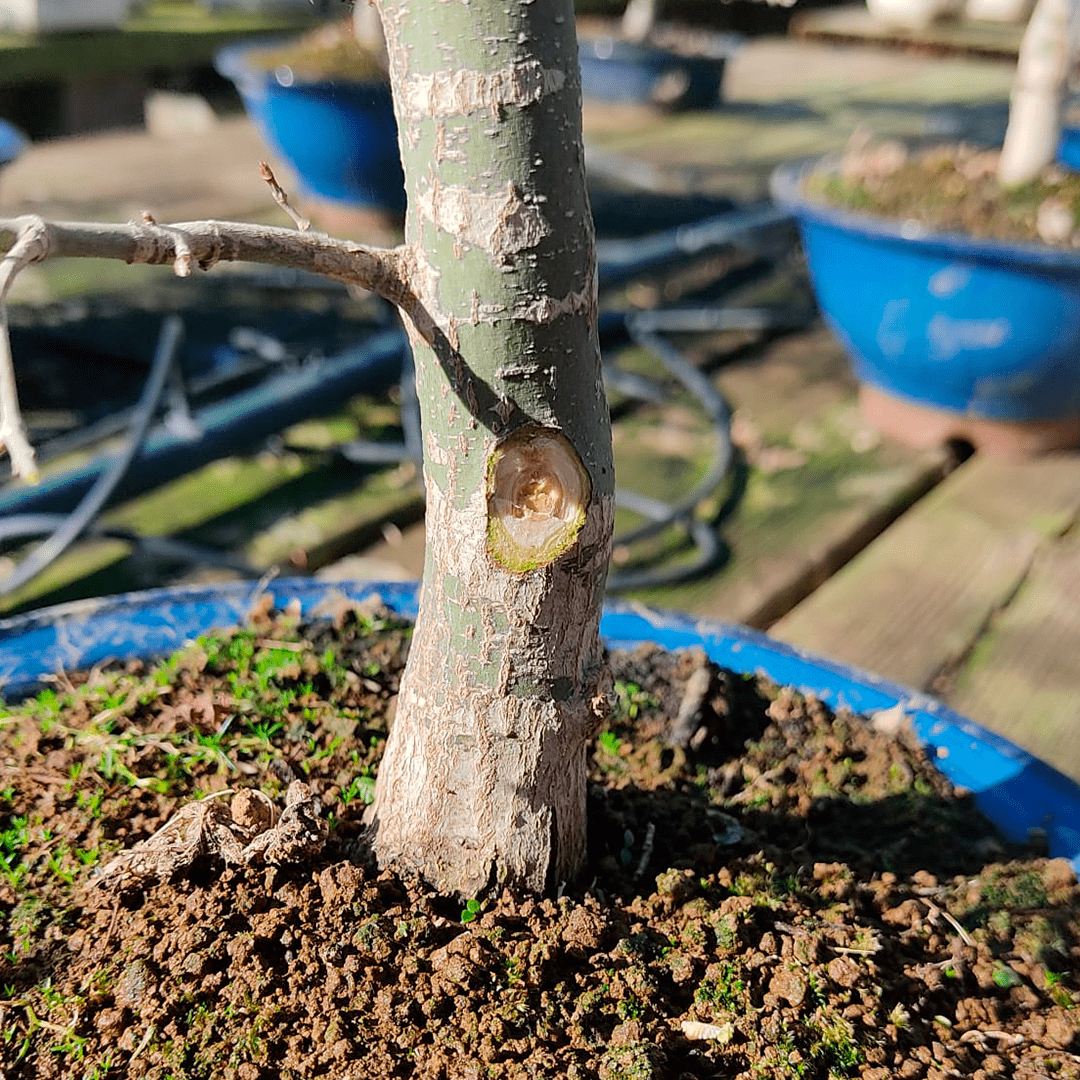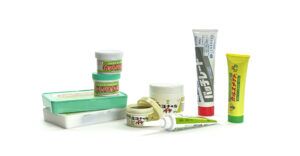How do our bonsai heal from pruning cuts?

Do you want to know how our bonsai heal after pruning, and what process they use? As bonsai owners, we must know how our tree react and be able to help them recover better. In this article we will tell you everything about it, keep reading to learn about healing in your bonsai, what cut pastes you can use and how to apply them.
What is scarring?
We should first begin by understanding the meaning of the word scar. To scar means to close, heal or fix. Make a wound or a cut heal completely until it is tightly closed and only the scar remains. It also means getting a wound closed completely. But what if I tell you that trees do not heal?
Trees are amazing organisms
The cork-like outer layer of a tree’s bark protects the tree from insects and disease. When this layer disappears, it exposes the tree to possible infections and decay that will weaken the main stem and cause a significant decrease in the overall health of the tree.
Also, a very important tissue layer called phloem is protected by the bark of the tree. Phloem is part of the tree’s circulatory system and is essential for its survival.

The phloem carries the energy-rich sugars, produced during photosynthesis, throughout the tree. Obviously, when the bark is removed, this flow of food stops, and the damaged part of the tree begins to dry out and decay begins.
When the bare wounds on the trunk cover about a third of the circumference, it can no longer carry water or nutrients up or down the trunk. The tree uses the rest of the healthy bark, which will regain slack and continue to feed the tree.
An injured tree will not heal per se. Instead, it will use a series of biological processes to isolate and seal the damaged area to prevent disease and decay from entering the healthy tree tissue.
The tree responds in two ways:
- Compartmentalization
- Developing barrier zones.
When a tree is injured, the injured tissue is not repaired and does not heal. Trees do not heal; they seal.
If you look at an old wound, you will notice that it does not “heal” from the inside out, but eventually the tree covers the opening forming a “callus” tissue around the edges of the wound.
After wounding, the new wood that grows around the wound forms a protective boundary that prevents infection or decay from spreading to the new tissue. Therefore, the tree responds to injury by “compartmentalizing” or isolating older injured tissue with the gradual growth of new, healthy tissue.
Immediately after the injury, the tree will begin to compartmentalize the damaged area, producing a type of “callus” that seals the edges of the wound. Over time, the callus continues to grow and forms a dense neck area wrapped around the wound, isolating it from the healthy wood.
The tree reinforces this “callus” barrier by creating an inhospitable environment in the healthy wood behind it that discourages disease growth. Using chemical and physical barriers, the tree can defend itself against bacteria that are always trying to find a way to it. Over time, the “callus” will slowly cover the wound and keep the tree healthy.
If the tree is fast and efficient with its boundary-setting mechanisms, the infection remains localized and does not spread. However, if boundary-setting mechanisms are not effective, the infection will spread. More vigorous or actively growing trees can cope more successfully with the propagation mechanisms of decay.
How can we help our bonsai?
Now it’s our turn to help our bonsai in its natural process. With a clean and sharp chisel, we will cut the irregular and loose edges of the wound. This way, we will help our bonsai to form the callus more quickly, isolating the wound.
Then we will use a healing agent, whose function is to favour the internal and external environment of the wound so that the tree isolates it faster. In addition, the cicatrisers create a more effective barrier against fungi and diseases coming from the outside. A double shield, the one that creates the tree internally and the healing one externally.
This healing agent can be found in balm or paste form. The balm cicatrisers are generally used on branch cuts that are small or medium size. Its function is to create a protective layer. While the sealing pastes, in addition to having protective effects, have fungicidal compounds, which create an additional shield against diseases. Therefore, it is recommended for use in medium or large cuts.
These are the ones the use at Mistral Bonsai:
Actually, there is not much difference between healing balms and pastes. Both are waterproof to keep moisture out and have fungicidal agents that help prevent diseases from entering.
The difference is its way of application and its viscosity. The balm is more liquid and, from my experience, works better with small wounds. The paste works best with large wounds. When putting the paste, wet your finger with a little water or a little camellia oil. This way the paste will not stick to your fingers, and you will be able to place it better.
There is a paste that is special for conifers, it is a little more viscous than normal, because the cut of the conifers gives off resin[1], the healing paste must be viscous enough to prevent the resin from coming out.
As you can see, our trees have 2 complex methods of sealing their wounds that they have used for thousands of years. These methods take time, but they are very effective, and they also create an old look in our bonsai that is very precious. We must help them in this process, by monitoring them, cleaning, and reducing the wound if necessary and using either the balm or the healing paste so that the process is quicker and free of fungi and diseases.
A scar that has been properly cleaned, reduced with the appropriate tools, and sealed with the right cicatrisers will look better, and the process will be faster. Gaining in health and an old look on our bonsai. Even in this process, we must hold hands with our bonsai to work better.
Remember that our tree needs us. Much muchigomi.
Until next time.
[1] The resin of conifers is a sticky substance that is released after suffering a cut or a wound. It has the function of a sealant and pathogen, preventing the entry of insects and diseases into the vascular system of the tree.
You may also be interested in…
Categories
Bonsai cultivation and care (60)
Bonsai gift (2)
Bonsai pests and diseases (7)
Bonsai repotting (3)
Bonsai species (1)
bonsai substrates (2)
Bonsai summer (1)
bonsai tools (1)
Bonsai work (13)
Ceramic pots (3)
Chinese culture (1)
Chinese culture (2)
Coniferous bonsai (2)
Conifers (1)


